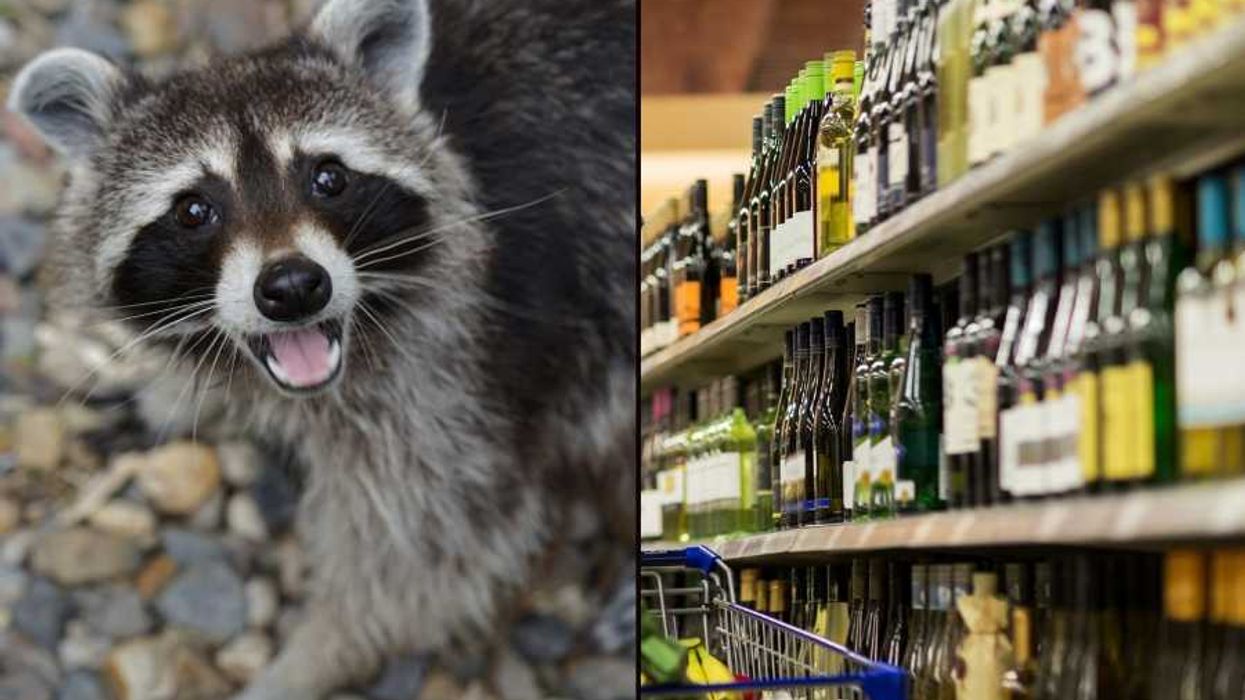Have you or someone you know canned fruit, salted and pickled cucumbers, cultured yogurt, or at the very least sampled a taste of lip-puckering kombucha? If so, you’re not alone. Give us your huddled crocks of kimchi and weighted-down batches of sauerkraut, teeming vats of kombucha, and barrels of dill pickles yearning to breathe free.
A study on millennial spending from 2014 found that we are critical consumers who prioritize authenticity and enjoy engaging with the brands we love. A health and wellness report last year showed that millennials want to eat healthy, “functional foods” that prevent chronic disease, and that we value sustainability and transparency in the consumables we buy.
[quote position="left" is_quote="false"]After all, there’s something about fermented foods that feels experimental, adventurous, even a little bit dangerous.[/quote]
And, like a fermenting brew, we’re growing. The 2015 U.S. Census report found that 16-to-34 year olds have become the country’s largest, most diverse population, growing to over 83 million people. Millennials have left Baby Boomers in the dust of our proverbial fixed-gear bikes to launch startups, bake loaves of sourdough, and update Instagram while sipping sour craft beer.
Many American food staples involve fermentation like coffee, chocolate, tea, cheese, yogurt, cured meat and fish, sauerkraut, and pickles, but a lot of us have forgotten the taste of traditional fermented foods. Supermarket shelves are stocked with sharp, single-note vinegar brines instead of traditional Eastern European ferments. What’s the difference? While vinegar is a byproduct of fermentation, its microorganisms get killed off in the sterilization process of conventional pickling and canning. Industrialized methods of preservation don’t have the secret weapon of lacto-fermentation provided by lactobacilli, a powerhouse of natural bacteria that live in the air and on vegetables. All they require to create probiotic food is a few basic ingredients (water, salt, and vegetables) and simple tools (a jar or barrel, and a cheesecloth).
Any group that can DIY websites and sauerkraut without batting an eye deserves a closer look, so I dug deeper. I wanted to know how and why millennials—despite our hectic lifestyles and limited attention spans—have reached back into the past to teach ourselves how to salt cure and sugar brine, to brew this and pickle that; to learn, if nothing else, why we’ve developed a taste for the pungent, tangy, bitter food and drink from cuisines around the world.
The increased interest in fermentation isn’t so much a phenomenon but a byproduct of the decades-old Good Food, Real Food, and Slow Food Movements that have, over the last ten years, been driven by millennials, according to Kara Nielsen, professional food trend tracker and strategist.
“When you look at the marketplace and try to understand what’s driving a trend, you have to ask what’s in it for the consumer,” Nielsen says. “Why they’re buying this product, what it’s doing for them, and what need is it meeting?”
Nielsen sees advancements in technology as tools that have enabled people to express themselves in new ways, as brewers and bakers and kimchi makers, and then sell or share what they know online, from YouTube to food blogs and cookbooks.
“Millennials had very creative childhoods. They did a lot of producing things, and were rewarded for their vision and creativity. It was very hands-on and experiential,” Nielsen explains. “They came of age in this era, and were lucky enough to have a variety of messages from culinarians, food writers, and journalists—the Michael Pollans of the world.”
[quote position="full" is_quote="true"]I got these emails from all across the country, people from their local chapters of the fermentation society coming out of the proverbial woodwork.[/quote]
This new canon of food media has fed our growing skepticism about the food system, and has pushed us to try to control what’s in our food, who made it, and how it affects our health. But the message isn’t coming from apron-clad grandmas hovering over pressure cookers in their kitchens. It’s been repackaged as food science and food porn, delivered by celebrity chefs and mindfulness yogis.
The medical community is still on the fence about whether fermented products like kombucha are more curative than toxic, but we’ve all caught on to the importance of a healthy gut: a quarter of all Americans are sampling the fermented drink said to boost digestive health, but that was once mistaken for poisonous fungi.
Millennials have a much stronger thirst for kombucha: 51 percent of adults age 25-34 regularly consume the fizzy tonic (often called “booch” for short) so much so that the drink’s annual market growth is projected to increase 25 percent each year until 2020. Daina Trout, her husband Justin, and Vanessa Dew are the co-founders of Health-Ade, represent part of this kombucha-thirsty demographic.
“We’ve always been passionate about the real food movement and felt the need to get real food back on the commercial shelf,” Trout says. “During nutrition school, I came to believe that health and wellness have more to do with one’s happiness than just the science.”
After completing her Master’s in Nutrition and Public Health at Tufts University, Trout took her love of fermented foods and turned it into kombucha, developing the recipe she had been home-brewing with for 10 years. She started small, brewing in their small apartment in Los Angeles, and began selling it to the public at the Brentwood farmers market in LA in 2012. Now, they’ve grown to become a national brand.
[quote position="left" is_quote="false"]It’s science, math, and a dose of black magic; J.K. Rowling meets Neil deGrasse Tyson and Anthony Bourdain. [/quote]
But kombucha is a product associated with some wild health claims from the wellness community, like curing cancer and detoxifying the body, according to NPR. So should we credit a bunch of health freaks for our love of fermented food? Not necessarily. While the health and wellness angle is a large part of the driving trend toward fermented foods, there are other factors at work.
“You need more than nutrition to make a trend,” Nielsen explains. “It’s not that everyone is attracted to every part of the equation. To make a trend get really big, you need multiple drivers. It can’t just be one thing.”
Maybe it’s our need to feel badass in our cushy, tech-centric lives—after all, there’s something about fermented foods that feels experimental, adventurous, even a little bit dangerous. It’s science, math, and a dose of black magic; J.K. Rowling meets Neil deGrasse Tyson and Anthony Bourdain.
When I grew my first Scoby (“Symbiotic Colony of Bacteria and Yeast”), I remember thinking, “I could be putting something potentially dangerous into my body.” The growth that appears in kombucha tea (a mixture of tea leaves, water, sugar, and kombucha starter) goes by many names: the Mother, Scoby, tea mushroom, and tea fungus; it’s a living symbiosis of bacteria and yeast. I named mine Toby. Bacteria usually reminds us of infections and diseases, not a rubbery probiotic blob commandeering a jar of kombucha. And if human instinct is worth anything, it looks terrifying, like some alien life form and feels as firm and slick as a sea creature.
One perk of fermentation is that it doesn’t feel like cooking at all, which takes the pressure off if you’re a novice in the kitchen. There’s this sciencey element that makes it appealing to millennials who are more likely to have gone to college and want to understand more complicated parts of the universe, from bacteria to black holes. For some, fermentation is actually the gateway drug into the culinary world.
As a Jewish kid from suburban New Jersey, Jeffrey Yoskowitz grew up eating traditional fermented Jewish foods, but had never paid attention to the history and processes behind them. He had no interest in cooking until he took a farm fellowship in the Berkshires where he began fermenting vegetables, making pickles, and delving into the fermenter’s Bible, Wild Fermentation by Sandor Katz. For Yoskowitz, the experience was eye-opening, crossing borders and generations.
“Who would’ve known that miso was made from fermented soybean paste that could have been fermenting for three years, and now I have friends who are doing it under their beds in Brooklyn?” he says.
Now, he’s tasted everything fermented from sweet potato fly to ginger bug (neither involve actual insects) at underground fermentation parties in Brooklyn. He’s travelled to Krakow to teach a pickling workshop, where the “students” who showed up were 80-year-old Polish women.
“There I was, going over there to spread the gospel, and here are these women who have been making pickles their entire lives,” he recalls. “I was so honored to be there, with this generation of pickle masters, asking them how they do it, and showing them how I make pickles in New York.”
[quote position="full" is_quote="true"]It feels more DIY than making your own dumplings. It feels geeky.[/quote]
Fermentation grounded him in the Jewish culinary traditions and survival techniques of his ancestors and revealed to him that preservation isn’t just something our great-grandparents did.
“It feels more DIY than making your own dumplings. It feels geeky,” he says. It inspired him to write a cookbook and start his own company, The Gefilteria. But will the millennial craving for fermented food last? “There’s so much power in hype,” Yoskowitz concedes. “Whatever you put into the spotlight and give more attention, people are going to be more willing to try. So, do a lot of people actually like those sour beers or do they feel a compulsion or pressure or curiosity to try them?”
As fermented foods have become a more permanent part of his eating habits, Yoskowitz has moved away from experimental sampling and sticks with what he finds nourishing and comforting—this means lots of sauerkraut and fermented tonic, rye bread and sardines—foods that impart pungent, acidic, and complex flavors and remind him of home. In a way, fermentation is exemplary of the balance between old and new: It’s old school DIY meets open-source tech.
Yoskowitz jokes that fermentation is actually “almost the laziest thing you can do! You just set it and forget it,” he laughs. But it’s sort of all in the eye of the beholder. Darra Goldstein, a food scholar and the founding editor of Gastronomica, looks at fermentation in stark opposition to the modern tech world.
[quote position="full" is_quote="true"]There’s so much power in hype. Whatever you put into the spotlight and give more attention, people are going to be more willing to try.[/quote]
“To me, if there’s technology, it has to work or it’s useless,” she points out. “And when we’re talking about fermentation specifically, it’s always kind of a crap shoot. There are all of these variables. The beautiful thing about fermentation is that you can’t get necessarily get absolute consistency.”
Much like my Scoby, fermentation is in and of itself a bit unwieldy. If innovation is making the wheel turn faster, fermentation is the opposite: it’s slow and there’s zero instant gratification.
“To me, that’s the beauty of it,” she says. “You’re always opening yourself up the possibility of the lack of success.”
Given the high level of error possible in fermentation, there is still so much left to be explored and discovered; so many stories left to be told. For Goldstein, her next role as editor and chief will focus precisely on that, bringing the rich and unchartered world of preservation into the mainstream through the new food magazine, Cured.
When she was first approached with the possibility of taking on this new role, she was hesitant.
“At first, I was like, ‘Really? A magazine about just curing? How many issues will we manage to get out of that?’ But you know, I started thinking about it and thought it was just endlessly fascinating. There are so many traditions throughout the world, so much history, so much cultural resonance, that it really could go on indefinitely.”
When a Times article about the new publication came out a few weeks ago, Goldstein was met with one of likely many surprises that are on her horizon.
“I got these emails from all across the country, people from their local chapters of the fermentation society coming out of the proverbial woodwork,” she says.
[quote position="right" is_quote="true"]You talk about millennials, but this tradition has been going on for millennia.[/quote]
The magazine issues will feature stories and histories of preservation practices all over the world, from Mexico, China, Poland, and Montana to medieval Baghdad and Western Africa. Along with experimental art and science-focused articles, there will be recipes that are coded by their ability to be replicated. Again, because fermentation is such a culinary “crapshoot” even the recipes must account for the changing environment, natural bacteria, and humidity its readership.
When I asked Goldstein what some of her first memories with fermented foods were, she too came back to the same Eastern European fermented dill pickle that intoxicated Yoskowitz and roped him into the fermentation community. She also recalls the first time she tried kombucha when she visited the USSR in the winter of 1972.
“I can still remember my first trip there. It was winter time and everyone was just trying not to get sick and having kombucha—they called it tea fungus there, which would never work as branding in the United States!” she chuckles. “It wasn’t for any kind of trendiness. People were then using it for health. And I wasn’t thinking about it in terms of yeast and bacteria, I was just thinking, ‘Eww, I really don’t like this but they say I should drink it so I’ll stay healthy.’”
Talk about peer pressure. Goldstein came to like the taste of kombucha, in the same way that many millennial palates have shifted gears. Being a generation that is exposed to so many immigrant cuisines from all over the world, we have a new opportunity to explore foreign flavors and unknown histories through fermentation, a form of food preservation that is arguably as old as humanity itself. In Goldstein’s own life, it has been a constant in all she has done.
As for millennials’ place within the burgeoning world of fermentation, Goldstein’s sees us in a moment on a lengthy timeline.
“You talk about millennials, but this tradition has been going on for millennia,” she says. “We might feel like we’ve discovered it at this moment, but now that the awareness has settled in, it isn’t something that’s going to stop because it is so much a part of human history and human culture.”

















 Image artifacts (diffraction spikes and vertical streaks) appearing in a CCD image of a major solar flare due to the excess incident radiation
Image artifacts (diffraction spikes and vertical streaks) appearing in a CCD image of a major solar flare due to the excess incident radiation

 Ladder leads out of darkness.Photo credit
Ladder leads out of darkness.Photo credit  Woman's reflection in shadow.Photo credit
Woman's reflection in shadow.Photo credit  Young woman frazzled.Photo credit
Young woman frazzled.Photo credit 
 A woman looks out on the waterCanva
A woman looks out on the waterCanva A couple sits in uncomfortable silenceCanva
A couple sits in uncomfortable silenceCanva Gif of woman saying "I won't be bound to any man." via
Gif of woman saying "I won't be bound to any man." via  Woman working late at nightCanva
Woman working late at nightCanva Gif of woman saying "Happy. Independent. Feminine." via
Gif of woman saying "Happy. Independent. Feminine." via 
 Yonaguni Monument, as seen from the south of the formation.
Yonaguni Monument, as seen from the south of the formation. 
